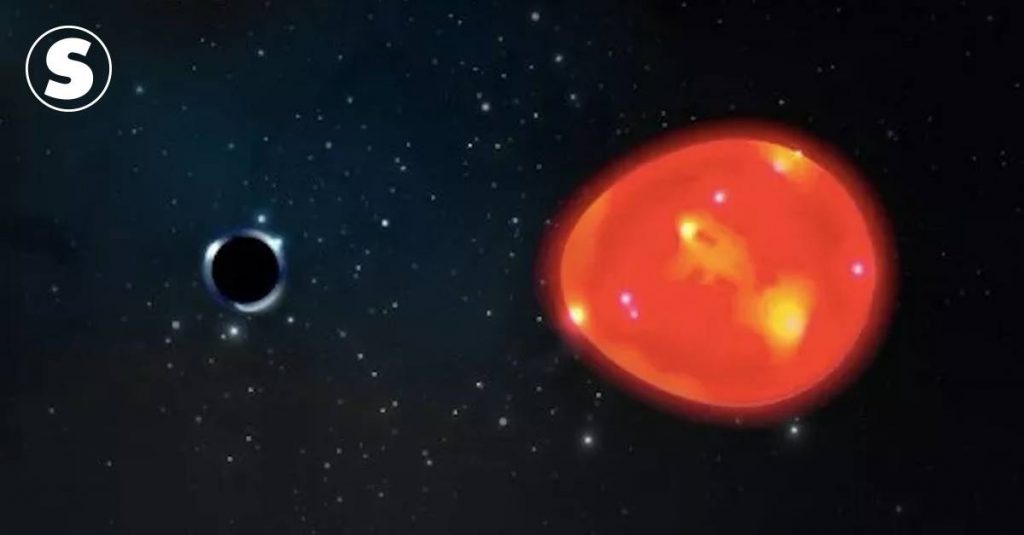Last Wednesday (21), a group of astronomers from Ohio State University in the United States announced the discovery of a new black hole. It might sound like normal news (that is, if you deem it normal to discover things that swallow up light), but the discovery in question caught scientists’ attention for two reasons.
The first is the distance. The black hole is the closest to Earth ever: it is only 1,500 light years away. It sounds like a lot, but it isn’t. For comparison, the distance between the Solar System and the center of our galaxy, the Milky Way, is about 28,000 light-years.
The second reason is its size – one of the smallest on record. According to the study published in the journal Monthly Notices of the Royal Astronomical SocietyA black hole is “only” three times the mass of our sun.
This puts it very far behind when compared to supermassive black holes, where the mass of the Sun is millions (even billions) times the mass of the Sun. But that shouldn’t be our rule of comparison, because supermass is the exception. Most are called black holes Excellent, Which was formed from ancient stars and is much smaller.
The interesting thing, then, is that they are tiny even by minuscule standards: stellar black holes, in general, have a few dozen solar masses, not just three. This cub is at the minimum level of black holes. Anything with less mass will be too lighter to collapse with gravity and form a mass.
The new black hole has been called a “unicorn.” Nice, isn’t it? The name comes from its unique and rare characteristics and location: the constellation of the unicorn (Monoceros) and the neighboring constellations such as Gemini, Orion and the Big Dog.

The dynamic duo
The unicorn has never been found alone. He has a partner: a swollen giant red star, which means at the end of his life – something that will happen to the Sun about 5 billion years from now. The star orbits the black hole, and was responsible for discovering it.
Finding non-emitting objects in the middle of outer space is the culmination of the phrase “needle in a haystack”. To find black holes, scientists need to note the disturbances these objects generate in their surroundings, such as X-ray emissions or the generation of gravitational waves (disturbances in the fabric of space-time caused by a large release of energy, which is to be expected. Einstein phenomenon confirmed 2015). But of course: the smaller the black hole, the more difficult it is to detect such disturbances.
This is where the red giant comes in. The star has previously been observed by several telescopes, such as KELT, located in Ohio, and NASA’s TESS satellite, which searches for exoplanets (planets outside the solar system). But researcher Tharindu Jayasinghe, head of the study, and his team noticed, for the first time, something intriguing about this star’s data: At some points in its orbit, the star’s light changed in intensity and appearance.
It was as if another object had gravity big enough to pull it, and change its shape – like in the image that opens this text. The data on the star has been around for a long time, but it was the first time a team had suggested that the cause of the distortion was a small black hole. Until recently, astronomers suspected that black holes of this size could exist.
“Just as the gravitational pull of the moon distorts the Earth’s oceans and interferes with the tides, so the black hole distorts the star, leaving it with that oval appearance of American football,” he said in his book. Release Todd Thompson, co-author of the Chair of the Department of Astronomy Studies at Ohio State University.
But of course: Like everything in science, more observations will still be needed until it can be said that the unicorn is actually a black hole. At the moment, officially, he’s a candidate – a pretty solid candidate, by the way.
Incidentally, the new research may help astronomers find other small black holes that may have been overlooked. This will aid in understanding the composition of these bodies, from dwarves to massive ones. As we explain in this text, studying small and medium black holes is key to understanding giants.

“Hardcore beer fanatic. Falls down a lot. Professional coffee fan. Music ninja.”






More Stories
The law allows children and adolescents to visit parents in the hospital.
Scientists pave the way for the emergence of a new element in the periodic table | World and Science
Can dengue cause hair loss? Expert explains how the disease affects hair